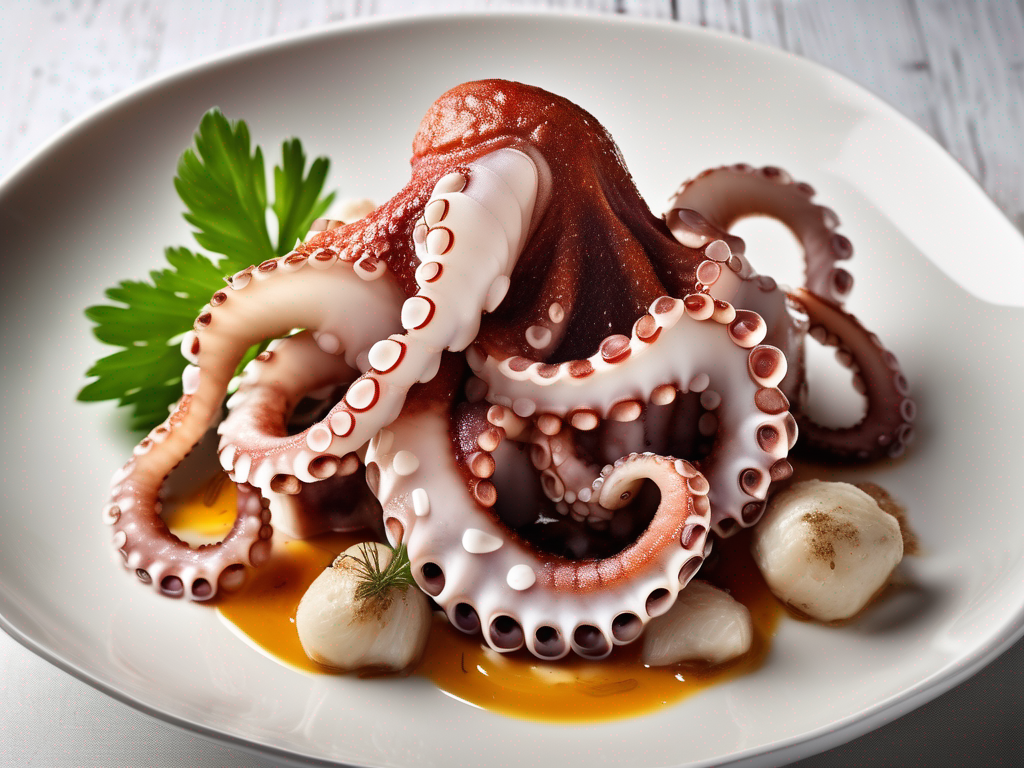
How to Tell if Your Freshly Cooked Octopus Has Gone Bad
Get Your Free Food Safety Cheat Sheet
30 most common foods with instant answers. Print it and stick it on your fridge—completely free!
How to Tell if Your Freshly Cooked Octopus Has Gone Bad
When it comes to enjoying seafood like octopus, freshness is key to both taste and safety. Whether you've cooked the octopus yourself or purchased it already cooked, it's important to be able to identify signs of spoilage. In this guide, we will explore how to tell if your freshly cooked octopus has gone bad, and provide you with practical tips to ensure food safety. (Octopus fresh cooked)
Understanding Freshness of Octopus
Octopus is a popular seafood choice known for its unique texture and flavor. Like all seafood, octopus is highly perishable and requires proper handling and storage to maintain its freshness. Here are some key points to keep in mind:
Signs of Fresh Octopus:
- Bright, shiny skin
- Firm and springy texture
- Mild oceanic smell
- Clear eyes
Signs of Spoiled Octopus:
- Slimy or sticky texture
- Foul or ammonia-like odor
- Discolored skin or flesh
- Cloudy or sunken eyes
Checking the Texture
The texture of the octopus can be a good indicator of its freshness. Follow these steps to assess the texture:
Steps to Check the Texture:
- Gently press the flesh with your finger.
- Fresh octopus should feel firm and spring back when touched.
- If the flesh feels mushy or slimy, it may have spoiled.
Smelling for Freshness
Your sense of smell is a powerful tool when it comes to detecting spoiled food. Octopus should have a mild, briny oceanic smell. Here's how you can use your sense of smell to determine freshness:
Steps to Smell for Freshness:
- Take a whiff of the octopus.
- Fresh octopus should have a clean, slightly sweet smell.
- If you detect a strong, fishy odor or any hint of ammonia, the octopus may be spoiled.
Visual Inspection
Visual cues can also help you determine the freshness of cooked octopus. Look for any changes in color, texture, or appearance that may indicate spoilage:
Signs of Spoilage to Look for:
- Discoloration: Octopus should have a uniform color, any unusual discoloration may indicate spoilage.
- Skin Texture: Fresh octopus should have a smooth, shiny skin. Avoid octopus with a slimy or sticky surface.
- Eyes: Clear, bright eyes are a sign of freshness. Cloudy or sunken eyes may indicate spoilage.
Storage and Handling Tips
Proper storage and handling are crucial in maintaining the freshness of cooked octopus. Follow these tips to ensure food safety:
- Store cooked octopus in an airtight container in the refrigerator.
- Consume cooked octopus within 2-3 days of cooking for the best quality.
- Avoid leaving cooked octopus at room temperature for extended periods.
- When reheating octopus, ensure it reaches an internal temperature of 165°F (74°C) to kill any bacteria.
Conclusion
By being aware of the signs of spoilage and following proper storage and handling practices, you can enjoy your freshly cooked octopus safely and deliciously. Remember to trust your senses and take necessary precautions to ensure the seafood you consume is of the highest quality. If in doubt, it's always better to err on the side of caution when it comes to food safety. Enjoy your octopus dishes with confidence knowing you can recognize the signs of spoilage and take the necessary steps to protect your health. (Octopus fresh cooked)
Authoritative Food Safety References
These agencies and university labs inform every tip and health precaution we publish.
USDA FoodKeeper – Cold Storage Guidelines
Official refrigerator, freezer, and pantry timelines maintained by the U.S. Department of Agriculture.
Visit USDA FoodKeeperFDA Produce Safety Rule & Grower Guidance
Field-to-fridge handling practices that prevent contamination of fruits, vegetables, and leafy greens.
Visit FDA Produce SafetyCDC Foodborne Illness Prevention Hub
Surveillance-backed guidance on pathogens, symptoms, and steps to reduce foodborne illness risk.
Visit CDC Food SafetyUC Davis Postharvest Technology Center
University research detailing optimal storage atmospheres for produce after harvest.
Visit UC Davis PostharvestPenn State Extension – Home Food Preservation & Safety
Peer-reviewed extension bulletins on safe canning, chilling, and reheating practices.
Visit Penn State ExtensionGet Your Free Food Safety Cheat Sheet
30 most common foods with instant answers. Print it and stick it on your fridge—completely free! Want more? Upgrade to the complete guide with 70+ foods.
Scan your food directly and get instant safety info using our AI-powered camera feature.